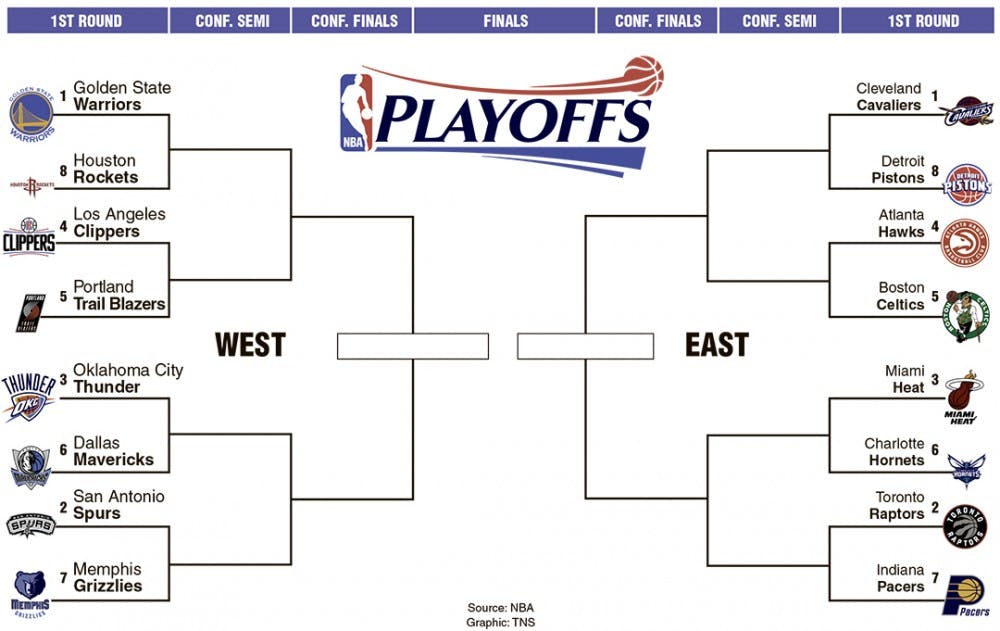The 2016 NBA postseason has gotten off to a pretty boring start as just two of the eight series-opening games were decided by fewer than 10 points. The Western Conference games were particularly noncompetitive as the conference's top seeds won by an average of 29 points, with the closest game being the fourth-seeded Clippers 115-95 domination of the fifth-seeded Trail Blazers.
Excluding the lockout-shortened campaign in 2011-12, this is the first time since the 2009-10 season that the playoffs have not included a team with a losing record. However, the final four teams to make the playoffs in the West this season were a combined 10 games over .500, which could explain the four blowouts that occurred over the weekend. The Eastern Conference games were a bit more competitive, including an upset from the seventh-seeded Pacers over the East's second-best team, the Toronto Raptors.
Despite some mildly interesting basketball in the first games of the Eastern Conference quarterfinals, there are simply too many teams in the playoffs every year. Sixteen of the league's 30 teams find themselves playing more than 82 games in a season, which is simply excessive. The NFL, a league with 32 teams, allows just 12 teams into the postseason, while Major League Baseball's postseason features 10 teams, four of which square off in a wild-card play-in game in each league.
The playing field in the NBA is generally very top heavy, where the top teams in each conference are dominant, as was the case in the West this season. The Golden State Warriors had the best season in league history, winning 73 games, while the San Antonio Spurs posted their best record in the Gregg Popovich era at 67-15. In the East, the Cavaliers are the runaway favorite to return to the NBA Finals, while the Raptors were considered to be strong favorites against the Pacers before dropping the first game on Saturday.
Because of this trend of top-heavy dominance, a team seeded seventh or eighth in its conference has not won a playoff series since the 2012 postseason, when the Philadelphia 76ers upset the Chicago Bulls in six games. However, it is certainly worth pointing out that the Bulls lost their star point guard, Derrick Rose, to a torn ACL in the first game of that series, which they won by 12 points. The Bulls simply weren't the same from that point on and had little time to adjust, bowing out quickly by losing four of the next five games.
In the last three postseasons coming into this year's run, the bottom two seeds in each conference won a total of 16 games, which is an average of fewer than a game and a half per series. Five of the 12 series were sweeps, which just isn't what fans want to see out of playoff basketball.
The NBA Playoffs are too long to not be interesting throughout. The Warriors captured the Larry O'Brien Trophy on June 16 of last year after beginning their playoff run on April 18, nearly two months earlier. With four rounds of best-of-seven series, the postseason drags on into mid-June, even though the games sometimes aren't competitive until the conference finals. The top two seeds in each conference reached the conference finals in each of the last two seasons, and only the 2014-15 Houston Rockets were pushed to seven games in the conference semifinals. The competitiveness of the early rounds of postseason play is lacking, which does not cater to the fans.
I propose a system similar to the one used by the NFL. Each conference should send six teams to the postseason rather than eight, and the top two seeds in the conference receive a bye. This system would create more competitive basketball in the earlier rounds, prompting more fans to tune in for the entirety of the postseason.

